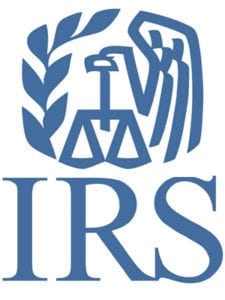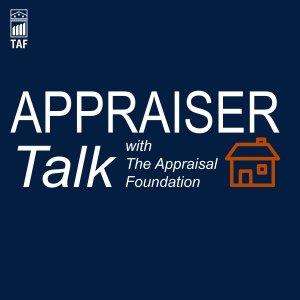 I thought I’d pass along some information about the IRS strategy for Estate Tax Returns and their related appraisal. The moral of the story is to hire a qualified appraiser and save a lot of trouble. Because this article is so long, I’ve broken it into 2 separate posts. The second half will post next week.
I thought I’d pass along some information about the IRS strategy for Estate Tax Returns and their related appraisal. The moral of the story is to hire a qualified appraiser and save a lot of trouble. Because this article is so long, I’ve broken it into 2 separate posts. The second half will post next week.
By Jay Fishman, FASA, Bruce Bingham, ASA, and Peter Barash
The Internal Revenue Service is undertaking several new and significant enforcement initiatives that specifically target abusive tax-related appraisals and the individuals who prepare them. This conclusion is based on extensive discussions with the IRS and congressional sources, and on a review of internal IRS documents that have become publicly available. The immediate consequence for individuals and firms providing valuations for tax purposes is a three-pronged enforcement effort, as follows:
- First, the IRS is now singling out appraisals for special scrutiny. It has enhanced its traditional process of auditing appraisals of tangible and intangible property and has begun a Compliance Initiative Project that seeks a better understanding of patterns of appraisal usage in the tax system, including the use of valuation discounts. Finally, active discussions are ongoing inside the Service on what additional steps are necessary to increase appraiser accountability, including an easing of the current standard for taking enforcement action against appraisers. It is our understanding that the Service has hired additional appraisers to help accomplish these activities.
- Second, appraisers whose valuations improperly support an understatement of a taxpayer’s tax liability will face Internal Revenue Code Section 6701 fines for knowingly aiding or assisting such understatement. We believe that a significant number of potential 6701 charges against appraisers are currently being studied.
- Third, when appraisers are found to have committed a 6701 violation, referrals will be made to IRS’s Office of Professional Responsibility (OPR) for the purpose of initiating proceedings to disqualify them from practice before the Service. Procedures for making such referrals are not yet in place but are likely to be in the not-too-distant future.
What is noteworthy about Section 6701 and the OPR portions of the IRS’s enforcement initiative is that although the authority to pursue each of them has existed for many years, we do not believe either has previously been exercised against any appraiser. This record of relative inaction is likely to change dramatically.
Changes to Treasury Department Circular 230
A related development, involving changes to Treasury Department Circular 230, could increase the likelihood that abusive appraisals will be detected in far greater numbers than ever before. These changes establish standards of practice for written advice that “tax practitioners” give their clients and were designed by the Treasury/IRS to rein in practitioners whose aggressive advice to clients has been blamed for an explosive growth in tax-avoidance schemes. While appraisers are not presently included in Circular 230’s definition of a “tax practitioner, “advice involving appraisals and material valuation issues are specifically covered by its provisions. This suggests that when the government enforces tax practitioner compliance with Circular 230 best-practice requirements, some of the tax advice at issue is likely to involve valuations. When that occurs, the IRS’s attention will inevitably be drawn to the appraisers who prepared them.
The revisions to Circular 230 highlight an important fact about the underlying document that may be unknown to many appraisers and appraisal users. Circular 230, which has been in existence for many years and sets forth the responsibilities of practitioners before the IRS, was amended in 1985 to specifically allow for the disqualification of appraisers who are assessed an “aiding and abetting” fine. The inclusion of tax advice relating to valuations in the recent Circular 230 revisions make it likely that the enforcement focus on appraisers will increase. Still, the Circular’s precise impact on valuators will not be clear for some years.
A longer-term consequence of the IRS’s determination to curtail tax-related appraisal abuses – and a potentially crucial one – involves support inside the Service for easing the criteria for taking debarment or suspension-type enforcement actions against appraisers. The likeliest direction for such a change is that the current and fairly stringent Section 6701 “aiding and abetting” test would give way to the much easier “incompetence” test, which now applies to accountants and other tax practitioners but not to appraisers. Such a change, if it were to occur, would almost certainly be accompanied by a sharp increase in Circular 230 sanctions against appraisers and could also lead to the establishment of other types of sanctions against appraisers.
The problem of unreliable tax related appraisals
The IRS’s decision to “turn up the heat” on appraisers is a direct response to two interrelated realities. First, there is an increased recognition by senior IRS officials that the historic lack of proper attention to tax-related appraisal problems has contributed to ineffective tax administration and may well account for hundreds of millions of dollars annually in lost tax revenues. In fact, for millions of income, estate, and gift returns filed each year, determinations of the fair market value of tangible and intangible property are an important factor in establishing tax liability. The second reality comes in the form of sharply vocal criticisms from the tax-writing committees of the U.S. Congress over the reliability of tax related appraisals and the doubts, expressed by some, about the competency and/or integrity of the universe of individuals who prepare them. Indeed, some influential voices in Congress have even suggested that the concept of “fair market value” is ineffective as a public policy template for In many of the hundreds of Tax Code provisions that rely on it and that advocacy appraisals are too often used to improperly understate tax liability. That attitude was evident in the decisions of the tax-writing committees in the 108th Congress to prohibit fair market value tax deductions, in most cases, for charitable donations of intellectual property.
A very unwelcome, but not inconceivable, outcome for the community of professional appraisers could result from the mix of the two realities described above. One would be the enactment by the current 109th Congress of Tax Code changes that further reduce reliance on fair market value determinations (e.g., proposals of the Joint Taxation Committee [JTC] to eliminate fair market value tax deductions for charitable contributions on noncash property, including closely held stock) or that undermine the role of appraisers in our tax system (e.g., the JTC’s recommended overturning of the existing practice of applying shareholder level discounts for lack of control and marketability to inter generational transfers of interests in family limited partnerships). The second involves a more aggressive program of Treasury/IRS sanctions directed against appraisers. The American Society of Appraisers (ASA) has been working hard on Capitol Hill to convince legislators that professional appraisers, with meaningful valuation credentials, do possess the skills and independence necessary to perform tax-related appraisals in a fair, efficient, and reliable manner.
This article attempts to describe what appears to lie ahead for appraisers who provide tax-related services and sets forth our present understanding of how the IRS is likely to respond when it finds appraisals that it regards as problematic.
What is a “qualified appraiser”?
It also needs to, be said at the outset that since the late 1990s, in anticipation of the difficult public policy climate that now exists for appraisers who practice in the tax area-ASA, through the Business Valuation and Government Relations Committees, has been advancing its own appraisal reform agenda with the Service. The centerpiece of that agenda calls for a major upgrading of the IRS’s current and certainly inadequate definition of “qualified appraiser” and adoption, by the Service, of the Uniform Standards of Professional Appraisal Practice (USPAP) for those providing valuation services. To date, the Service has not upgraded its “qualified appraiser” definition (although it is considering doing so), and it has declined to require that appraisals for tax purposes adhere to USPAP. The IRS has, however, developed its own set of appraisal standards, which bear some resemblance to USPAP, for internal use by valuators who are employed by the Service. We strongly believe that adherence to the Uniform Standards is an essential indicator of competency for all appraisers providing tax valuations.
While not all valuators with a tax practice will welcome an enhanced enforcement focus on appraisers, the new regime is likely to produce some important public policy benefits, if it is accompanied by a significant upgrade in the definition of “qualified appraiser” and a requirement for adherence to uniform appraisal standards, as ASA has recommended.
Authors
Jay Fishman, FASA, Business Valuation Review Editor and Chairman of the American Society of Appraisers Government Relations Committee; Bruce Bingham, ASA, former Chairman of the Business Valuation Committee; and Peter Barash, Government Relations Consultant to the Business Valuation Committee.
Be sure to read part 2 of this article, which further discusses Internal Revenue Code Section 6701 and Circular 230.
Jack Young
NorCal Valuation




